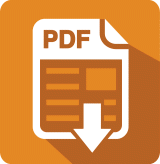E3 – Surgical margins for radical prostatectomy 
Key Messages
• The positive surgical margin rate is less than 25% for patients with prostate cancer, treated at the partner hospitals of the Rossy Cancer Network (RCN), which is within target.
Background
A radical prostatectomy is the complete removal of the prostate. Only millimeters away from the edge of the prostate are important bundles of nerves that control erectile function and are in close proximity to the urinary sphincter. The surgeon must perform a delicate balancing act – cut out the prostate and enough surrounding tissue to completely remove the cancer, but leave enough nerves to preserve erectile function and bladder control.
When a pathologist detects cancer cells right at the border of the removed tissue, the margins are said to be positive, suggesting that all of the cancer may not been removed. Positive surgical margins (PSMs) can generate anxiety among affected patients and can increase the risk of the cancer coming back, although it is not the only risk factor.
The rate of PSM is widely regarded as an outcome measure of surgical quality. Within the RCN, radical prostatectomies are performed by experienced surgeons at the MUHC and JGH. While the PSM rate can vary between surgeons and hospitals, there is evidence that high-volume surgeons and centres obtain better surgical results.
A consensus guideline published in the Canadian Urological Association Journal in 2010 determined an acceptable PSM rate of <25% for organ-confined disease (pT2).1
Charts + Tables
What Do the Results Mean?
The goal of a radical prostatectomy is to make the patient cancer free. Within the RCN, radical prostatectomies are only performed at the MUHC and JGH. We expect all centres to attain a PSM rate of less than 25% for pT2 disease. Since 2014-15, the PSM rate has been within the target. This is consistent with the PSM result of 25% (range 21-35 percent) obtained from the Procure Quebec Prostate Cancer Biobank for four university teaching hospitals (MUHC, CHUM, CHUQ, and CHUS) from 2007-2012 (1162 cases).2
The risk of having a PSM does not depend on the type of procedure (open, laparoscopic, or robotic), as long as it’s done by an experienced surgeon. While surgical expertise is cited as one of the major determining factors of PSM, other factors can also increase the risk of having PSM. These include:
• Higher Gleason score (a measure of how aggressive the cancer is)
• Nerve-sparing procedure
• Size of the cancer within the prostate
• Location of the cancer within the prostate
Efforts
The goal of measuring surgical outcomes is to improve the quality of care received by cancer patients. The RCN Genitourinary Disease Site Group is currently evaluating the PSM with additional risk factors. Surgeons performing radical prostatectomies now receive their PSM rate compared to the group average. This allows individual surgeons to compare their outcomes and adjust their surgical technique when felt appropriate.
Notes
Data Specifications
DEFINITION
Percentage of pT2 prostate cancer patients with positive surgical margins
DATA SOURCE
Cancer registry, pathology reports
NUMERATOR
pT2 prostate cancer patients diagnosed in the reporting year, that had a positive margin following radical prostatectomy
DENOMINATOR
pT2 prostate cancer patients diagnosed in the reporting year that underwent radical prostatectomy
EXCLUSIONS
None
MEASUREMENT TIMEFRAME
Yearly
References
1. Webster TM, Newell C, Amrhein JF, Newell KJ. Cancer Care Ontario Guidelines for radical prostatectomy: striving for continuous quality improvement in community practice. Can Urol Assoc J 2012;6:442-5.
2. Armen Aprikian, MD. Chairman of the Procure Quebec Prostate Cancer Biobank. Personal communication.
Disclaimer: The Rossy Cancer Network has attempted to ensure the accuracy of the data that it is reporting for each of its hospitals. Values posted on this web page may change as new information becomes available or corrections are made; this may alter accumulated values.

